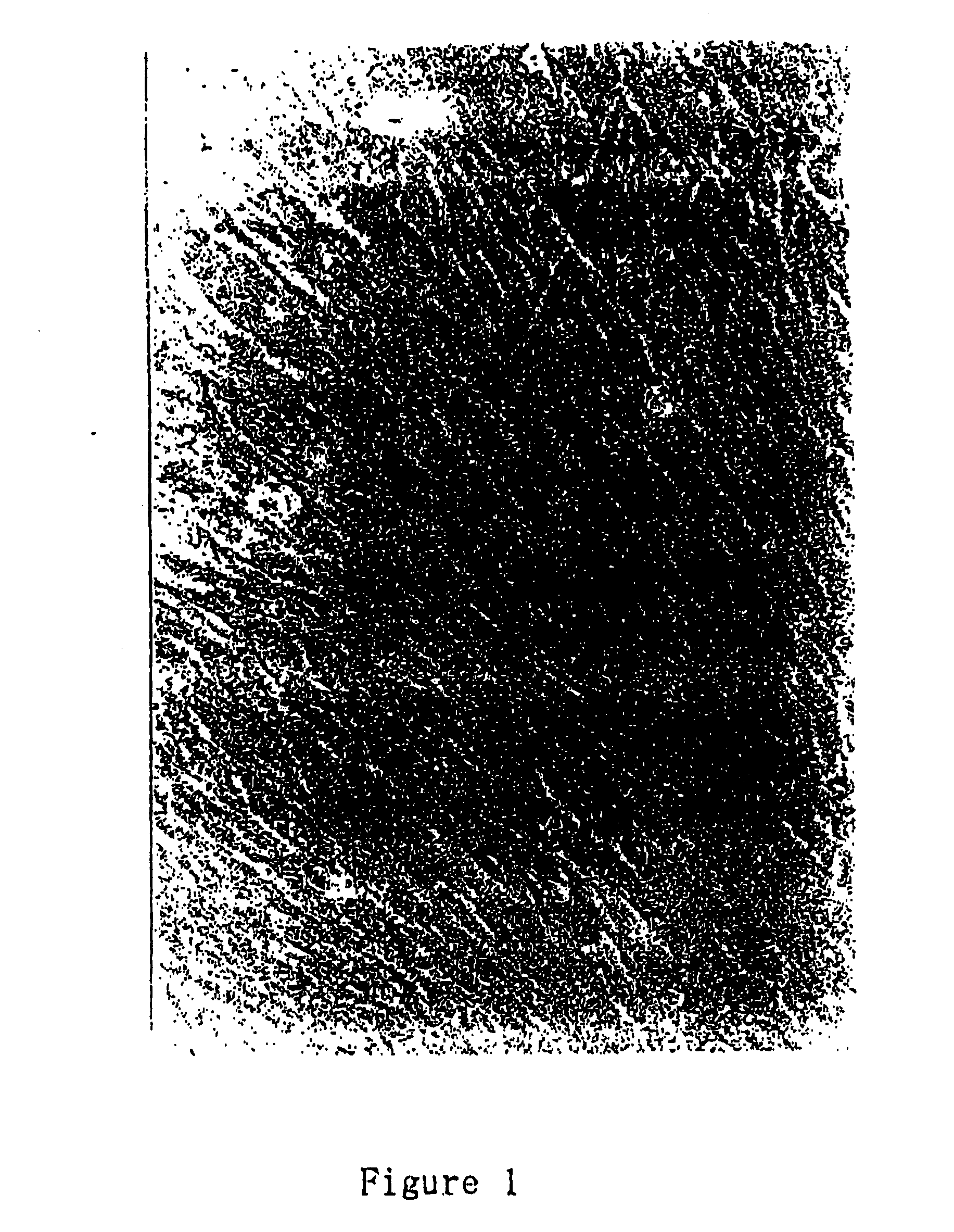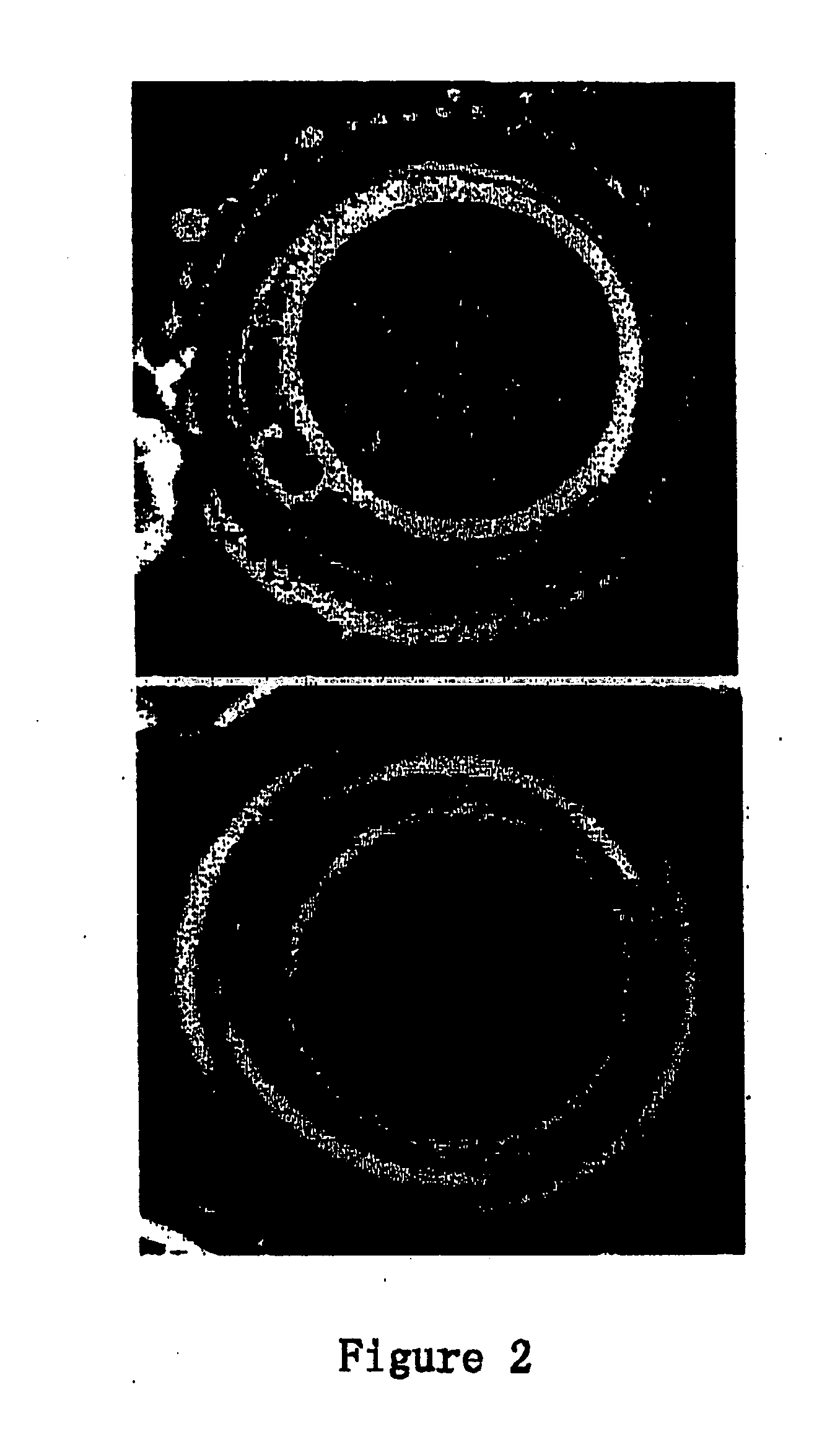Somatic cell derived embryonic stem cells and its differentiated cells
a somatic cell and stem cell technology, applied in the field of somatic cell derived embryonic stem cells, can solve the problems of no method of obtaining es cells that are compatible with the patient's, no proof demonstrating, and no proof demonstrating
- Summary
- Abstract
- Description
- Claims
- Application Information
AI Technical Summary
Benefits of technology
Problems solved by technology
Method used
Image
Examples
example 1
The preparation of nuclear donor cells for nuclear transfer
Foreskin tissue obtained from surgery with informed consent was minced and washed with PBS, centrifuged at 1000 rpm for 5 minutes, digested by 0.05% Trypsin / 0.02% EDTA (Gibco) at 37° C. for 30 minutes. Remove excessive solution from the tube and centrifuge the tube at 1000 rpm for 5 minutes. Discard the supernatant and culture the cell pellet in 90% DMEM (Gibco)+10% FBS (Hyclone)+50 IU / ml penicillin-streptomycin (Gibco). Re-suspend in plate and incubate at 37° C., 5% CO2, with the medium changed every 3 days. Passage after the cell grows to confluent and the cells of the 7th-20th passage are used as nuclear donor cells (FIG. 1).
Oocyte Preparation
Mature New Zealand female Rabbit, 2.5-3 kg, was superovulated with a single dose injection of 100 IU PMSG (i.m.) (The first bio-pharmaceutical company, Shanghai), followed by a single dose injection of 100 IU hCG (HuaFu High Bio-Technology Company, Tlanjing) (i.v.) 72 hours lat...
example 2
Establishing Human Nuclear Transfer Embryonic Stem Cells Lines
nt-units at the blastocyst stage were obtained as described above and pipetted up and down gently using a glass needle (stretched from a glass pipe of 3 mm diameter) with a diameter smaller than the blastocyst to strip zona pellucid. Then, the inner cell masses of the blastocysts were isolated and plated onto feeder layers and cultured in 79% DMEM (Gibco), 20% FBS (Hyclone), 1% non-essential amino acid stock (Gibco), 0.1 mM β-mercaptoethanol (Gibco), 10 ng / ml LIF (R&D), 10 ng / ml bFGF (R&D), 10 μM Forskolin (Sigma) at 37° C. in 5% CO2, with half of the medium changed every 2 days.
After 2-4 days' culturing, cell mass was observed to be growing on the feeder. After 7-20 days, colonies were observed (FIG. 12). The colonies were dispersed by enzyme or mechanical and passed onto a plate containing fresh feeder layer. After 20 passages, the ntES cells were cryopreserved.
The feeder cells were derive...
example 3
Induction of Early Muscle Cells Differentiation
Culture the EB or EB-like cell mass in the RA medium containing DMEM (Gibco), 0.5 μm retinoic acid (Sigma), 10% FBS (Hyclone) for 5 days. After replacing the medium with the muscle cell culture medium containing 79% DMEM (Gibco), 10% FBS (Hyclone), 10% Horse Serum (Sigma), 1% chick embryo extract (Gibco), culture further 7-10 days, can become muscle-like cell. The cells arrange in parallel, some of which have several nucleus (FIG. 15).
PUM
| Property | Measurement | Unit |
|---|---|---|
| diameter | aaaaa | aaaaa |
| temperature | aaaaa | aaaaa |
| alkaline phosphatase activity | aaaaa | aaaaa |
Abstract
Description
Claims
Application Information
 Login to View More
Login to View More - R&D
- Intellectual Property
- Life Sciences
- Materials
- Tech Scout
- Unparalleled Data Quality
- Higher Quality Content
- 60% Fewer Hallucinations
Browse by: Latest US Patents, China's latest patents, Technical Efficacy Thesaurus, Application Domain, Technology Topic, Popular Technical Reports.
© 2025 PatSnap. All rights reserved.Legal|Privacy policy|Modern Slavery Act Transparency Statement|Sitemap|About US| Contact US: help@patsnap.com



